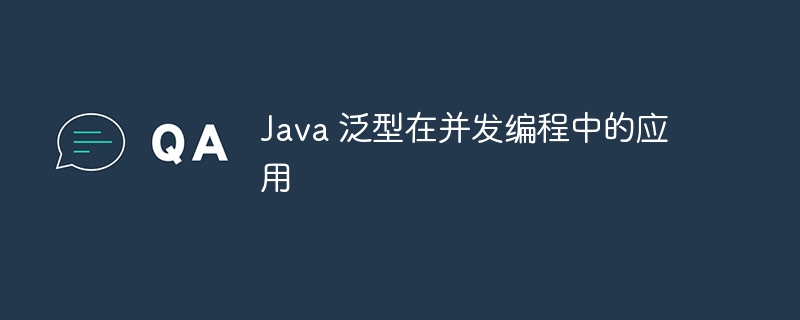Home >Java >javaTutorial >Application of Java generics in concurrent programming
Application of Java generics in concurrent programming
- 王林Original
- 2024-04-13 08:51:01663browse
Java generics are used to create thread-safe concurrent collections, such as queues, to improve application performance and reliability. Practical case: Using generic concurrent queues can achieve type safety (ensure only compatible elements are added), thread safety (atomicity and visibility), reusability (storage of multiple types of elements) and high performance (data based on linked lists) structure).

The application of Java generics in concurrent programming
Generics are a powerful tool in Java that allow us Create data structures and algorithms without reifying types. In concurrent programming, generics can be used to create thread-safe collections and data structures, thereby improving application performance and reliability.
Practical Case: Concurrent Queue
In concurrent programming, one of the common challenges is to implement a thread-safe queue data structure. Using generics, we can create a concurrent queue that is both efficient and thread-safe:
import java.util.concurrent.ConcurrentLinkedQueue;
public class ConcurrentQueue<T> {
private ConcurrentLinkedQueue<T> queue;
public ConcurrentQueue() {
queue = new ConcurrentLinkedQueue<>();
}
// 添加元素到队列
public void add(T value) {
queue.add(value);
}
// 从队列中移除并返回第一个元素
public T poll() {
return queue.poll();
}
// 判断队列是否为空
public boolean isEmpty() {
return queue.isEmpty();
}
}Advantages of applying generics
- Type safety: Generics ensure that only elements compatible with the queue type can be added to the queue, thus preventing type mismatch errors.
-
Thread safety:
ConcurrentLinkedQueueis a thread-safe collection provided in Java, which guarantees the atomicity and visibility of queue operations. - Reusability: Generic queues can store elements of various types, which improves their reusability and flexibility.
-
Performance:
ConcurrentLinkedQueueUsing a linked list-based data structure, it is very suitable for concurrent access, providing high throughput and low latency.
The above is the detailed content of Application of Java generics in concurrent programming. For more information, please follow other related articles on the PHP Chinese website!

